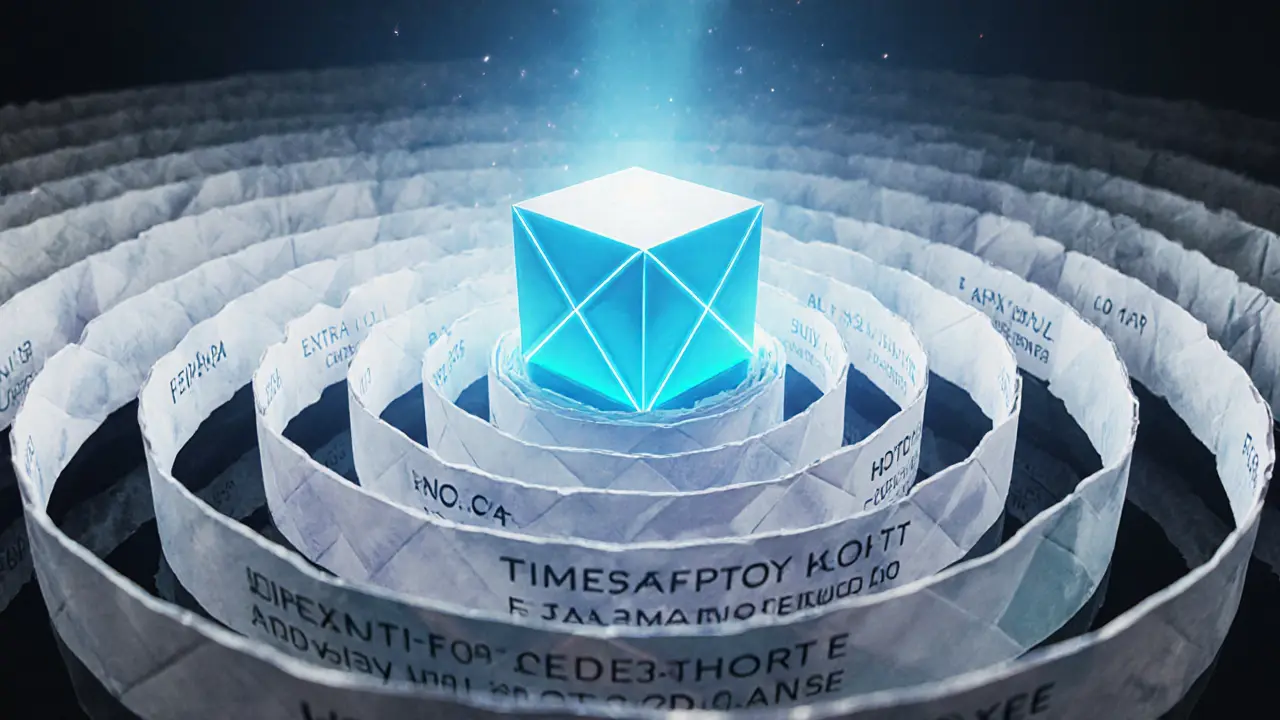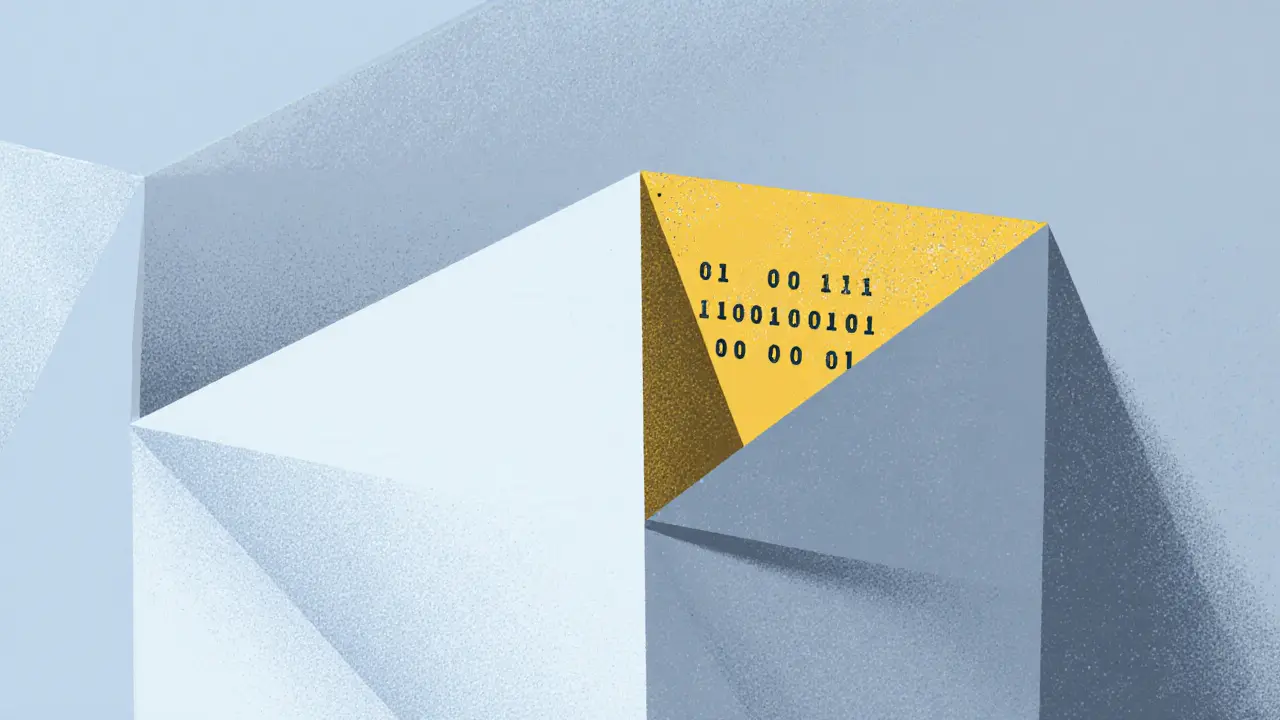Bitcoin Nonce Exhaustion Time Calculator
Nonce Exhaustion Calculator
Calculate how quickly miners exhaust the 32-bit nonce space based on hash rate and mining difficulty.
How This Works
The Bitcoin nonce is a 32-bit field with 4.29 billion possible values. At high hash rates, miners exhaust this space in milliseconds. This calculator shows:
- Time to exhaust primary nonce space
- Number of nonce cycles per block
- When extra nonce becomes necessary
Nonce range: 4,294,967,296 values (2^32)
Bitcoin nonce is a 32‑bit numeric field inside the block header that miners tweak to find a hash below the network’s current target. This tiny field, limited to 4,294,967,296 possible values, drives the core proof‑of‑work puzzle and directly ties into the ever‑changing mining difficulty. When the difficulty spikes, miners burn through the entire nonce space in a matter of seconds, forcing them to rely on secondary mechanisms like the extra nonce.
What a nonce actually does
A nonce (short for “number used once”) lives in the block header. Every time a miner changes the nonce value, the SHA‑256 double‑hash of the header changes. If the resulting hash is lower than the difficulty target, a new block is found and added to the chain.
- 32‑bit range → 2^32 ≈ 4.3billion possible values.
- Hash function used → SHA‑256, producing a 256‑bit output.
- Goal → hash < 0x000000… (target set by difficulty).
How the nonce range interacts with mining difficulty
Mining difficulty is a 256‑bit threshold that adjusts every 2,016 blocks (≈14days). The formula is:
new_difficulty = old_difficulty × (actual_time / 1,209,600)
When hashrate climbs, the network shortens the target, making it harder to hit. With today’s hashrate around 600EH/s, the expected number of hashes per block is over 1022. A single ASIC miner, such as the Antminer S19XP at 140TH/s, can only test about 3×105 nonce values per second-far below the total required. Consequently, miners exhaust the primary nonce space within milliseconds and must switch to other variables.

Extra nonce and other header fields
The extra nonce lives in the coinbase transaction’s scriptSig. Its length is variable, allowing millions of additional permutations. When the primary nonce is spent, mining software increments the extra nonce, rebuilds the Merkle tree, and starts a fresh 4.3billion‑value search.
Other mutable fields include:
- Timestamp (±2hours from network time).
- Version bits (for soft‑fork signaling).
- Transaction ordering - changing the Merkle root.
Real‑world impact on miners
Modern mining pools report over 99% nonce utilization thanks to automated extra‑nonce rotation. Without it, a solo miner with a high‑end GPU would spend 30ms cycling through the entire nonce range, then sit idle waiting for a new block template.
Example: An Antminer S19 XP processes about 306000 full nonce spaces per second. At the current difficulty of 63trillion, the probability of finding a block solo is roughly 0.00018%-essentially zero. Pools mitigate this by distributing work across thousands of miners, each receiving a unique extra‑nonce slice.
Future proposals and scalability concerns
Several Bitcoin Improvement Proposals aim to ease the nonce bottleneck. BIP‑320 suggests auxiliary proof‑of‑work that would let miners attach additional data to the block header, effectively expanding the searchable space without breaking consensus.
Researchers at MIT warn that if hashrate grows to 1,000EH/s by 2035, the primary nonce would be exhausted in 0.03seconds, forcing near‑continuous extra‑nonce updates and higher Merkle‑tree rebuild costs. Quantum‑resistant designs are still decades away; even a 1.9‑billion‑qubit machine would not solve the nonce puzzle faster than current ASICs.

Comparison: Primary nonce vs. Extra nonce
| Aspect | Primary nonce | Extra nonce |
|---|---|---|
| Location | Block header (32‑bit field) | Coinbase transaction scriptSig (variable length) |
| Maximum values | 4.29billion | Millions to billions (depends on implementation) |
| Typical exhaustion time | 10ms‑30ms at current difficulty | Continuous - refreshed each time primary nonce is spent |
| Impact on hash rate | Directly limits trials per block template | Allows additional trials without waiting for new template |
| Security role | Creates base cryptographic puzzle | Adds entropy via frequent Merkle‑tree recomputation |
Key takeaways
- The 32‑bit Bitcoin nonce limits each block template to about 4.3billion hash attempts.
- Mining difficulty adjusts every two weeks to keep block time near 10minutes, regardless of hashrate.
- When difficulty is high, miners run out of primary nonce values in milliseconds and must rely on the extra nonce, timestamp tweaks, and transaction ordering.
- ASIC manufacturers optimize nonce iteration speed, but the real scalability challenge lies in the fixed nonce space.
- Future protocol changes (e.g., BIP‑320) aim to expand the searchable space, but any shift must preserve Bitcoin’s security guarantees.
Frequently Asked Questions
Why is the nonce only 32 bits?
Satoshi designed a 32‑bit field to keep the block header compact and to force miners to rebuild the Merkle tree often. The limited space adds entropy and makes specialized hardware optimizations harder.
What happens when the primary nonce is exhausted?
Mining software increments the extra nonce, rebuilds the Merkle root, and starts a fresh scan of the 4.3billion primary nonce values. This cycle repeats many times per block.
How often does difficulty adjust?
Every 2,016 blocks, roughly every 14days, using the formula: new_difficulty = old_difficulty × (actual_time ÷ 1,209,600 seconds).
Can I solo‑mine with a GPU today?
Practically no. At the current difficulty, a high‑end GPU would need billions of years to find a block alone. Joining a pool is the only realistic way to earn rewards.
Will expanding the nonce solve scalability?
A larger nonce would give miners more direct search space, but the real bottleneck is the total hash‑rate growth. Protocol upgrades must balance security, decentralization, and energy use.





VEL MURUGAN
The nonce field is only 32 bits, giving exactly 4,294,967,296 possible values. At a hash rate of 1 TH/s you cycle through the entire space in roughly 4.3 seconds, and at 100 TH/s it’s a few hundred milliseconds. That’s why miners rely on extra nonce mechanisms once the primary range is exhausted.